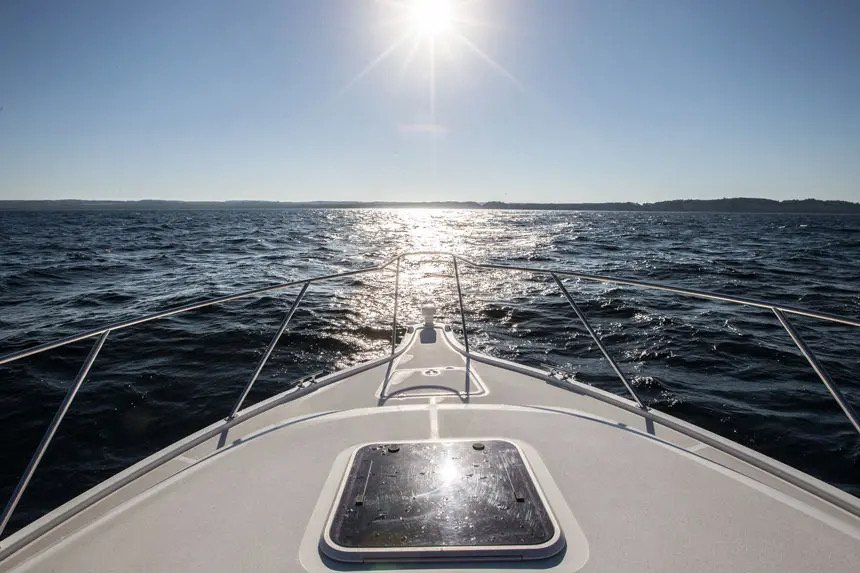Make A List, And Check It Twice (At Least)
In 2009, Harvard Medical School professor Atul Gawande published The Checklist Manifesto: How to Get Things Right. The bestseller drew attention to patterns of serious and avoidable lapses that highly trained, talented people in the medical profession were making. His overarching conclusion? If they had only used a checklist.
Ordinary folks associate to-do lists with weekend chores and grocery shopping, making Gawande’s epiphany seem prosaic. But his insights have saved lives — lots of lives. His point of departure is that mistakes are caused not so much by a lack of knowledge (ignorance) but rather by failing to apply what we know (ineptitude).
His lessons apply to boaters, too. Checklists, both mandatory and informal, have long been part of going to sea. Experience is a great teacher, but when it includes running out of food and water or discovering that essential charts, supplies and instruments are not aboard, the school of hard knocks is not so romantic. It is also irresponsible. A checklist is a common-sense tool that solves these problems.
A checklist serves as an unchanging memory prompt when detail and sequence are critical. No matter how many times you have done something, there will always be days when distraction, fatigue or impatience interfere. By standardizing our actions and decisions, checklists help keep us on track when complacency beckons or we flirt with the notion of cutting a corner.
Some checklists might be used every time you get underway. Others might be monthly, midseason or once a year. It depends on the complexity of your boat and cruise, and the consequences of overlooking something.
No one can possibly prescribe the optimal checklist for all boats, though there is a book that tries. The Bridge Procedures Guide by the International Chamber of Shipping contains more than 20 checklists for situations ranging from navigating in ice to abandoning ship. And the most useful checklists may not come off the shelf. They evolve organically from experience.
Predeparture checks are a good example of a routine procedure that lends itself to a list. Almost all commercial vessels use a pre-departure checklist to establish a basic level of readiness. These checklists include such things as:
fluid levels in all machinery
fuel levels
battery status
VHF radio functionality
navigation instrument accuracy
running lights and flashlights
horn
cooling water and oil pressure
gear ahead and astern
steering
provisions, especially water
weather reports
float plan
shore couplings
A pre-arrival checklist is also a good idea, especially if you have been cruising for an extended period. How do you know if your VHF is transmitting if you haven’t used it for days? How do you know your gear will operate astern? A friend of mine entered a marina one time without first testing if his engine would go astern. He discovered the deficiency shortly before slamming into another yacht.
You’ll probably remember most things most of the time. A checklist can increase your success rate. Laminate it for good measure. (Anything laminated commands respect!)
Offshore voyaging and long-range cruising introduce more elaborate considerations and, therefore, more elaborate checklists. At some point the original checklist may become unwieldy; if so, break it into two or three more specific lists.
Checklists can be useful for tracking less-immediate concerns, too. For instance, a spare-parts inventory is a type of checklist. You may not need a dozen fuel filters, but perhaps you should always have at least two. And when was the last time you ran the bilge pump? Is the end of the anchor rode attached to the boat? Put it in a list.
Safety is a category unto itself. Flares, fire extinguishers and medications all have expiration dates. Other items, such as PFDs, first aid kits and seacocks, are of such importance that a regular visual inspection is warranted on an interval, even if it is annual.
Checklists are a proven mechanism for doing things the right way, every time, but they are no substitute for critical thinking. If checklists become a perfunctory exercise in paperwork, they won’t limit normal human error. A good checklist strikes a balance: It gets the big stuff right without taking you down a rabbit hole of excruciating detail, such that you never get off the dock.
No checklist can anticipate every contingency. If it does, you have probably spent too much time making checklists and not enough time out cruising.
This article originally appeared in the May 2018 issue of Soundings.

